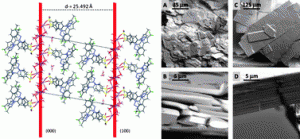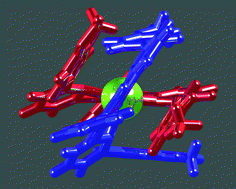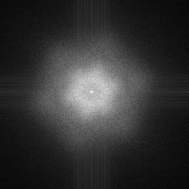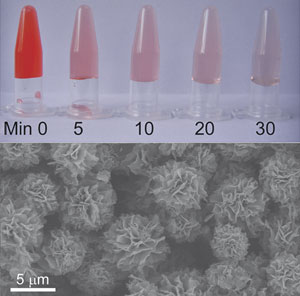Congratulations to Raeeun Lee from the Osaka University in Japan– recent winner of the CrystEngComm Poster Prize at the 60th JSCC Symposium which took place in Osaka from the 27th-30th September!
Archive for October, 2010
Top Ten most-read CrystEngComm articles in September
Read the most-read CrystEngComm articles of September 2010, listed below:
DOI: 10.1039/C003986A
DOI: 10.1039/C0CE00190B
DOI: 10.1039/C004065G
DOI: 10.1039/C0CE00474J
DOI: 10.1039/C0CE00150C
DOI: 10.1039/B919819A
DOI: 10.1039/C0CE00356E
DOI: 10.1039/C000154F
DOI: 10.1039/C0CE00486C
DOI: 10.1039/B911000C
Hydrogen bond defined
An IUPAC task group has recently published their recommendations for the definition for the hydrogen bond.
“The hydrogen bond is an attractive interaction between a hydrogen atom from a molecule or a molecular fragment X–H in which X is more electronegative than H, and an atom or a group of atoms in the same or a different molecule, in which there is evidence of bond formation.”
The recommendations continue with a list of experimental and theoretical criteria that can be used as evidence for the presence of the hydrogen bond, and finish with characteristics that are typical of hydrogen bonded systems.
The task group membership includes Professor Gautam Desiraju (Bangalore, India), founding Editorial Board member, and current Advisory Board member of CrystEngComm.
For more information on the task group and to view the provisional recommendation see the IUPAC report.
Follow the links below to read two CrystEngComm Highlights with a focus on hydrogen bonding:
Hot Article: Engineering Crystals for Painkilling Performance
The marketed crystalline form of the painkiller celecoxib (Cel-III), COX-2 selective anti-inflammatory drug, has poor solubility. Various strategies to improve this and increase its bioavailability have been published including the use of crystalline forms of the sodium salt. This study by Julius Remenar and colleagues in the USA describes the structural findings and insights that have resulted from their effort to harness and understand the sodium salts of Celecoxib. Find out more in this CrystEngComm ‘Hot Article’.
 Celecoxib sodium salt: engineering crystal forms for performance
Celecoxib sodium salt: engineering crystal forms for performance
Julius F. Remenar, Mark D. Tawa, Matthew L. Peterson, Örn Almarsson, Magali B. Hickey and Bruce M. Foxman
CrystEngComm, 2011, Advance Article
DOI: 10.1039/C0CE00475H, Paper
READ FOR FREE! Until November 18th.
Hot Article: Tetracarboxylate pillars
 Michael Zaworotko and colleagues from the University of South Florida demonstrate how a tetracarboxylic acid (BIPA-TC) is prepared using C3S3 and then used as a ligand to generate two isomeric nets that represent examples of “ligand-to-ligand” pillaring. To find out more about this ‘Hot Article’ read the full communication here.
Michael Zaworotko and colleagues from the University of South Florida demonstrate how a tetracarboxylic acid (BIPA-TC) is prepared using C3S3 and then used as a ligand to generate two isomeric nets that represent examples of “ligand-to-ligand” pillaring. To find out more about this ‘Hot Article’ read the full communication here.
Cocrystal controlled solid-state synthesis of a rigid tetracarboxylate ligand that pillars both square grid and Kagomé lattice layers
Jason A. Perman, Amy J. Cairns, Łukasz Wojtas, Mohamed Eddaoudi and Michael J. Zaworotko
CrystEngComm, 2011, Advance Article
DOI: 10.1039/C0CE00542H, Communication
READ FOR FREE! Until November 16th.
π-stacked catenenes
 An article of interest to CrystEngComm readers from our sister journal Dalton Transactions has been published online. The article, by Catherine Housecroft and colleagues at the University of Basel, looks at catenanes which use π-stacking interactions. They show that multiple face-to-face π-stacking of arene and pyridine rings occurs in [FeL2]2+ and [RuL2]2+ (L = 6,6″-bis(4-methoxyphenyl)-4′-phenyl-2,2′:6′,2″-terpyridine) and causes [Fe(2)2][PF6]2 to be high-spin.
An article of interest to CrystEngComm readers from our sister journal Dalton Transactions has been published online. The article, by Catherine Housecroft and colleagues at the University of Basel, looks at catenanes which use π-stacking interactions. They show that multiple face-to-face π-stacking of arene and pyridine rings occurs in [FeL2]2+ and [RuL2]2+ (L = 6,6″-bis(4-methoxyphenyl)-4′-phenyl-2,2′:6′,2″-terpyridine) and causes [Fe(2)2][PF6]2 to be high-spin.
Read more in the full Dalton Transactions article here:
Towards catenanes using π-stacking interactions and their influence on the spin-state of a bis(2,2′:6′,2″-terpyridine)iron(II) domain
Sven Y. Brauchli, Edwin C. Constable, Kate Harris, Daniel Häussinger, Catherine E. Housecroft, Pirmin J. Rösel and Jennifer A. Zampese
Dalton Trans., 2010, Advance Article
DOI: 10.1039/C0DT00743A, Paper
Hot Article: Chemical and epitaxial interactions compete in controlling crystal polymorphs
A team at New York University have revealed the importance of chemical interactions at the nucleation surface compared with the periodic surface potential associated with epitaxy in controlling polymorphism through epitaxial relationships with crystalline substrates. In this communication, Brian Olmsted and Michael Ward test the effectiveness of GRACE (Geometric Real-space Analysis of Crystal Epitaxy) software in predicting cases of epitaxially directed nucleation by performing a combinatorial crystallization study involving crystalline substrates and polymorphic compounds.
 The role of chemical interactions and epitaxy during nucleation of organic crystals on crystalline substrates
The role of chemical interactions and epitaxy during nucleation of organic crystals on crystalline substrates
Brian K. Olmsted and Michael D. Ward
CrystEngComm, 2011, Advance Article
DOI: 10.1039/C0CE00366B, Communication
READ FOR FREE! Until 9th November.
Hot Article: Stilbazolium organic optical crystals
In their CrystEngComm Hot Article, O-Pil Kwon and colleagues have developed a new cation core structure, N-benzyl stilbazolium nonlinear optical chromophore with a non-polar benzyl group to achieve acentric molecular ordering in the crystalline state.
 Acentric nonlinear optical N-benzyl stilbazolium crystals with high environmental stability and enhanced molecular nonlinearity in solid state
Acentric nonlinear optical N-benzyl stilbazolium crystals with high environmental stability and enhanced molecular nonlinearity in solid state
Pil-Joo Kim, Jae-Hyeok Jeong, Mojca Jazbinsek, Seong-Ji Kwon, Hoseop Yun, Jong-Taek Kim, Yoon Sup Lee, In-Hyung Baek, Fabian Rotermund, Peter Günter and O-Pil Kwon
CrystEngComm, 2010, DOI: 10.1039/C0CE00456A
READ FOR FREE! Until the 2nd of November.
Flowery magnetic microspheres clean water
 Industrial wastewater containing toxic metal ions and organic pollutants has become a serious threat to the environment and public health. So the synthesis of three-dimensional micro and nanomaterials with the capability of absorbing undesired water contaminants in a straightforward and effective manner is a priority for environmental scientists.
Industrial wastewater containing toxic metal ions and organic pollutants has become a serious threat to the environment and public health. So the synthesis of three-dimensional micro and nanomaterials with the capability of absorbing undesired water contaminants in a straightforward and effective manner is a priority for environmental scientists.
Now Hongjie Zhang and colleagues at Changhun Institute of Applied Chemistry, have designed an easy method to synthesise flower-shaped Fe3O4 microspheres with magnetic properties, which can be used as absorbents to treat wastewater. Unlike previous synthetic routes, Zhang’s hydrothermal method avoids the use of surfactants and copolymers that would need to be removed from solution.
Find out more about this article in Lorena Tomas Laudo’s story here Hierarchically structured Fe3O4 microspheres: morphology control and their application in wastewater treatment
Xiyan Li, Zhenjun Si, Yongqian Lei, Xiaona Li, Jinkui Tang, Shuyan Song and Hongjie Zhang,
CrystEngComm, 2010 DOI: 10.1039/c0ce00217h
Or read the CrystEngComm article for FREE until the 2nd of November:










